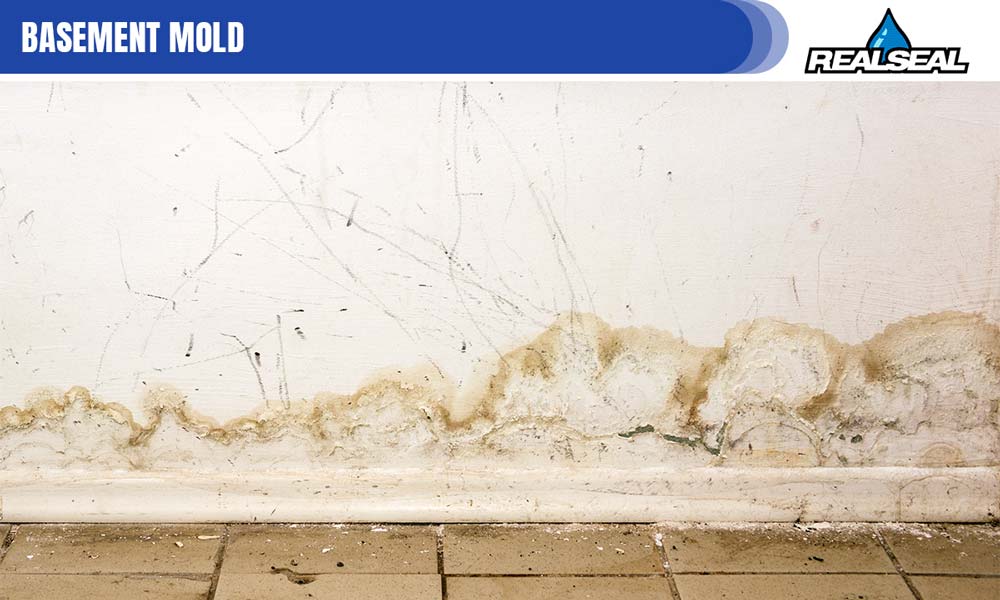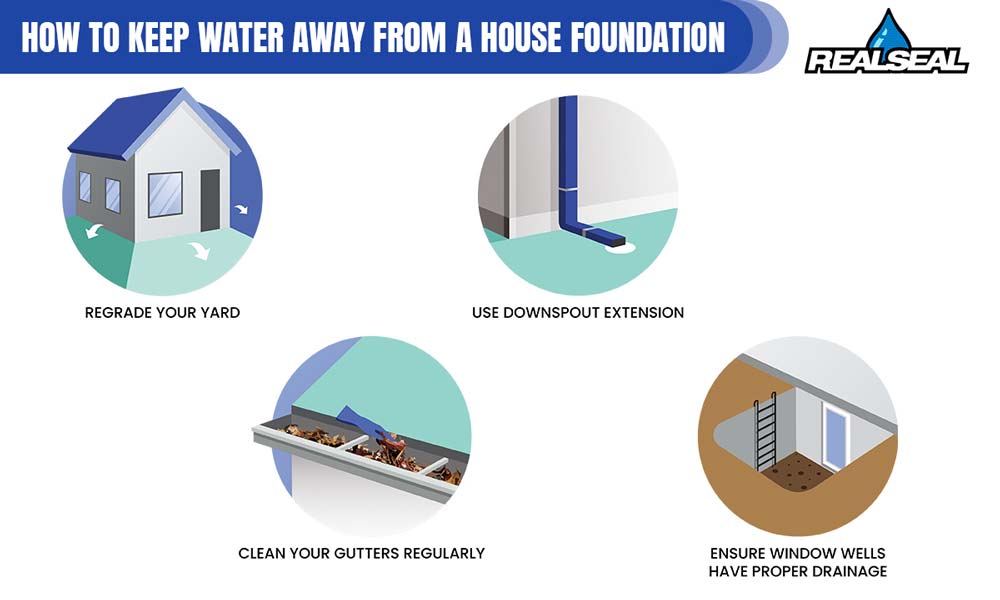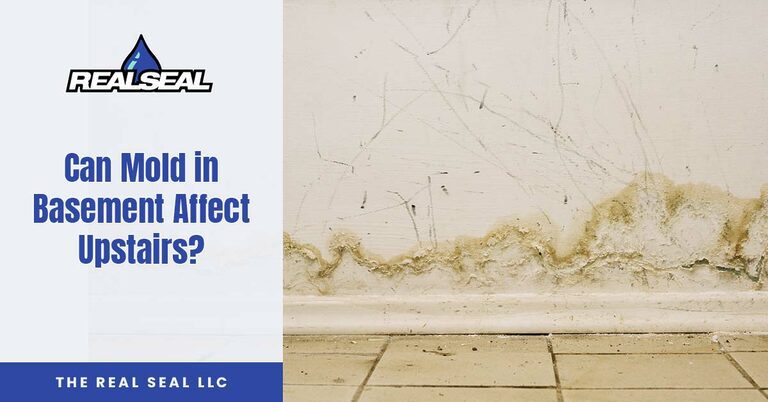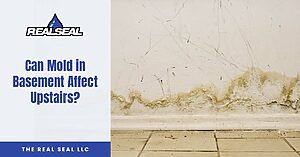Are you a homeowner with a basement? Are you noticing condensation and tell-tale mold spots in your basement and wondering if it could affect the second floor of your home? Mold tends to show up in basements first because they’re underground–but just how dangerous is basement mold for the rest of your house? Read on to find out how serious the problem may be, what causes it, and what the best solutions are.
Why Basements Tend to Be Moldy
Mold thrives in areas with high moisture content, and because basements are underground, they tend to be the most susceptible to this. It is, therefore, essential to have good drainage around the foundation, identify and repair water leaks, and keep the area dry in order to prevent mold infestation, which can cause health hazards and destruction of property. We’ll talk more about how to prevent basement mold in just a bit.

Why You Don’t Want Mold in Your Basement
When it comes to mold in a basement, it is not just an unpleasant sight or smell. The presence of mold can have severe consequences on your health, your home, and your wallet.
Firstly, mold can cause allergic reactions, respiratory problems, and other health issues. Inhaling mold spores can exacerbate existing conditions like asthma and allergies, as well as cause other problems such as headaches, fatigue, and nausea.
Moreover, mold can damage your home’s structural integrity and aesthetic appeal. It can eat away at wood, drywall, and other materials, weakening them and causing costly repair bills. Additionally, mold can reduce the value of your home if left untreated.
Mold thrives in damp environments, and basements are notorious for being damp, dark, and poorly ventilated. Water seepage and high humidity can create a perfect climate for mold growth. Once mold sets in, it spreads rapidly and can be challenging to eliminate, making prevention the best approach.
Therefore, it is essential to address mold in your basement right away. If you suspect mold, seek professional help to identify and remove it before it causes any more damage to your home or your health.
Can Mold in the Basement Travel Upstairs?
Yes. Mold spores are tiny, lightweight particles that can travel through the air. The ventilation system can quickly transfer these spores from the basement to the upper floors. As the warm air rises, it pulls the spores along with it, and the spores settle on surfaces on the upper floors. Mold can also spread upstairs through pipes and ducts that pass through the basement.
It is also possible to unknowingly transfer the mold spores from the basement to the upper floors. For instance, if you have been in the basement, you could carry mold spores with you on your clothes and shoes. When you move to the upper part of the house, you can deposit these spores, which can quickly grow into mold.
Signs of Mold in Your Basement
The most common signs of mold in a basement include a musty odor, black or green spots on walls or ceilings, and unexplained allergic reactions like coughing, sneezing, and skin irritation.
Mold can also cause discoloration or peeling of wallpaper or paint and structural damage to building materials. In some cases, mold can be difficult to detect, as it can grow behind walls or under carpets, leading to hidden mold growth.
To prevent mold growth in your basement, it is crucial to keep the area dry. Use dehumidifiers and fans to reduce moisture levels, fix leaks or water damage, and clean and disinfect areas that are prone to mold growth. Regular inspections and maintenance can help you detect and address mold problems before they become severe.
How to Get Rid of Basement Mold
The first step in removing basement mold is identifying the root cause. Usually, the presence of mold suggests that there is excess moisture or water seepage in the area. You should inspect the basement for leaks or standing water and get them fixed immediately.
Additionally, ensure that the basement has fans or dehumidifiers to reduce the humidity levels. If poor drainage around the foundation contributes to mold in the basement, then it must be addressed. For more information about how a drain tile system can keep the soil around your basement dry, see our article How A Drain Tile System Can Save You Money.
Once you’ve tackled the source of the problem, you can then start cleaning the mold. However, it’s essential to take safety precautions to avoid exposure to mold spores. Be sure to wear protective gear such as gloves, goggles, and respirators to prevent inhalation and skin contact.
To clean mold, use a solution of bleach and water at a 1:10 ratio and scrub the affected area. Alternatively, you can use a commercial mold remover that contains enzymes for breaking down mold spores. After cleaning, rinse the area with water and dry it thoroughly to prevent mold from reappearing.
It’s important to note that DIY mold removal is best suited for small areas of surface mold. If you have extensive mold growth or are unsure of how to proceed, it’s best to seek professional help. An experienced mold remediation specialist can effectively assess the problem, identify the type of mold, and take the necessary steps to remove it safely.
How to Keep Basement Mold from Spreading Upstairs
The best way to keep basement mold from spreading upstairs is to ensure that there is no mold in your basement. Since basements are underground, you can go a long way toward keeping them dry by making sure there’s no excess moisture in the ground around the foundation. Here are some ways to do that:

- Regrade your yard so that it slopes away from the foundation. This will redirect groundwater away from the house, reducing the risk of water accumulation around the foundation and minimizing the likelihood of a damp basement.
- Install downspout extensions to direct water away from the foundation and toward a location where it can safely be absorbed, reducing the pressure on the foundation walls.
- Clean your gutters regularly. Clogged gutters can cause water to overflow and pool around the foundation–and from there, find its way into your basement. Cleaning gutters regularly ensures that water flows properly and minimizes the risk of damage.
- Install a drain tile system to collect excess groundwater and redirect it away from the foundation. A drain tile system consists of a buried, perforated pipe and a layer of gravel that prevents excess moisture from building up in the ground around the foundation.
Other things you can do include:
- Fix any basement plumbing leaks.
- Repair any cracks in the foundation wall. Water can find its way into your basement through even the tiniest of cracks.
- Use a dehumidifier.
- Use mold-resistant drywall, paint, and insulation. These materials contain mold inhibitors that prevent mold growth even in areas that are prone to moisture.
- Don’t forget regular cleaning and maintenance. This includes cleaning up any spills or leaks immediately, wiping down walls and surfaces with a dry cloth, and regularly checking for any signs of mold growth.
Is It Safe to Live in a House with Basement Mold?
Living in a house with basement mold presents health risks to everyone–especially older adults, young children, and people with weak immune systems. Symptoms of mold exposure can vary from person to person, ranging from itchy eyes, nasal congestion, and skin irritation to more severe conditions like pneumonia or bronchitis.
Additionally, mold in the basement can damage your home’s structural integrity. Mold growth can weaken the foundation, cause cracks in walls, and affect the electrical and plumbing systems. Mold growth can also damage household items such as clothing, furniture, and carpets.
So, it is unsafe to live in a house with basement mold, as this can result in serious health problems and damage your home’s structure. In these instances, seeking professional help for mold removal is crucial.
How Much Does Basement Mold Removal Cost?
The cost of mold removal can vary, depending on the severity of the mold growth and the size of the affected area. The average basement mold removal cost can range from hundreds of dollars to thousands of dollars, depending on how severe the issue is.
However, the cost can be significantly higher if the mold growth has spread to other parts of the house or there is extensive water damage. In such cases, the cost of mold removal can skyrocket to as much as $30,000.
It is important to note that while DIY mold removal may seem affordable, it can often do more harm than good. Mold spores can spread quickly without proper containment, and improper removal techniques can cause further damage to the affected area. It is highly recommended that homeowners seek professional mold removal services to ensure that the problem is completely eradicated and their home is safe for living.
If you’re in Chicagoland and concerned about the impact that basement mold can have on your home’s living area, contact The Real Seal today to schedule an inspection and receive a free repair estimate.







10 Responses
Great read! I never considered how mold in the basement could impact the air quality upstairs. It’s alarming to think about the potential health risks. I’ll definitely be checking my basement for any signs of mold now!
Happy to help!
This is such an informative post! I never realized how mold in the basement could impact the air quality and overall health of the entire home. It definitely makes me want to check my own basement for any hidden mold issues. Thanks for raising awareness on this important topic!
Happy to have helped!
Great post! I never realized how much mold in the basement could impact the air quality upstairs. It’s definitely an issue I need to look into in my own home. Thanks for the informative insight!
Thanks so much!
This was a really eye-opening read! I had no idea that mold in the basement could spread to the upper floors. It definitely makes me want to check my own home for any signs of mold. Thanks for the helpful information!
Glad you got something out of it!
I never realized how much mold in the basement could affect the rest of the house! It’s a bit scary to think that the air quality upstairs could be compromised. Thanks for shedding light on this important issue; I’ll have to keep an eye on my basement now!
Always good to keep a keen eye!